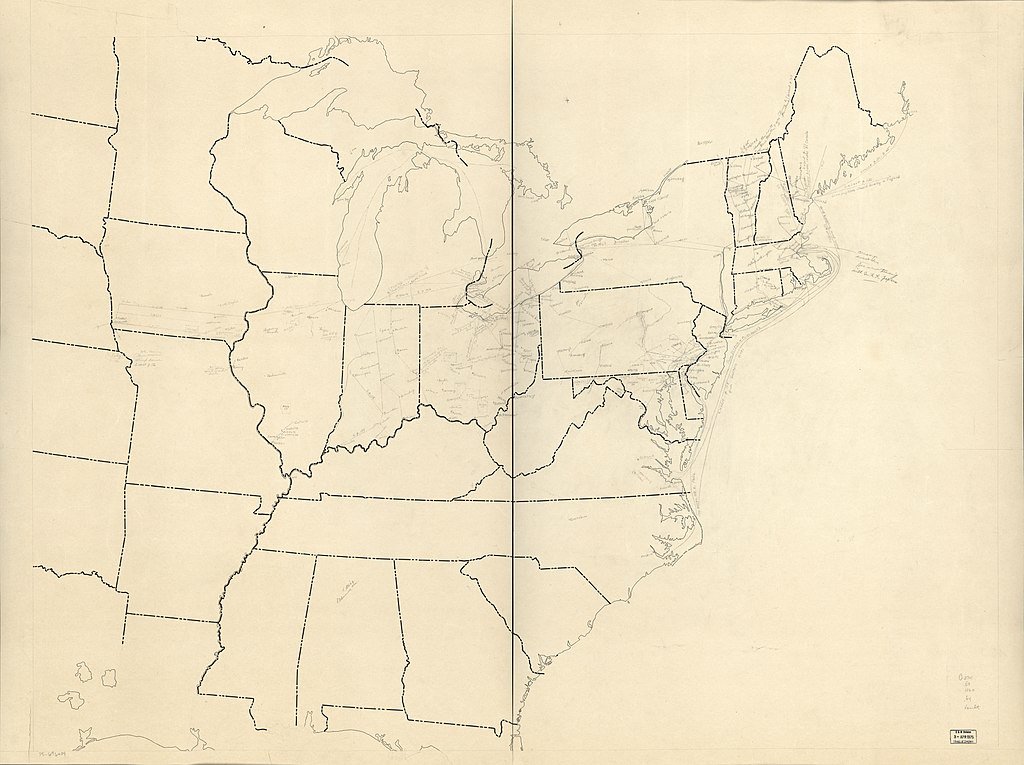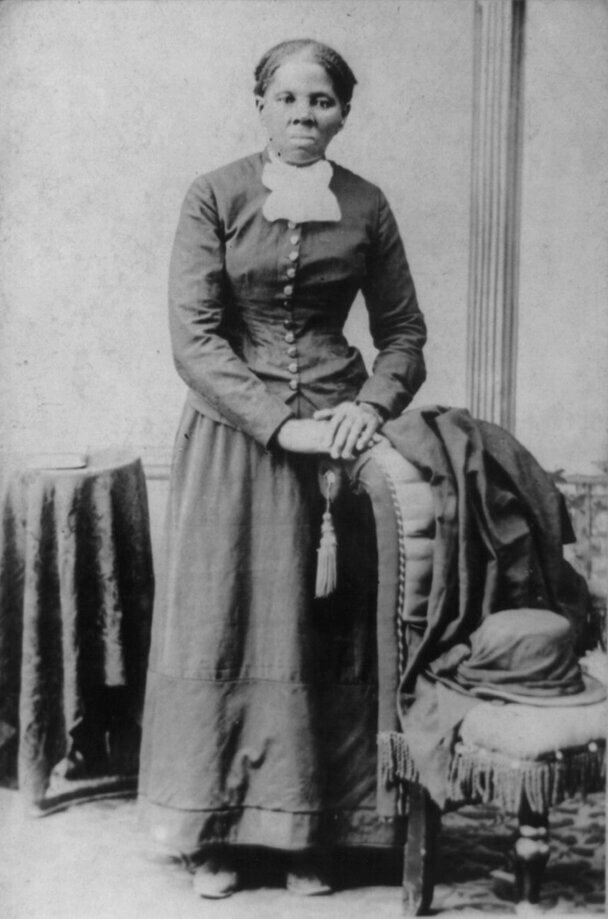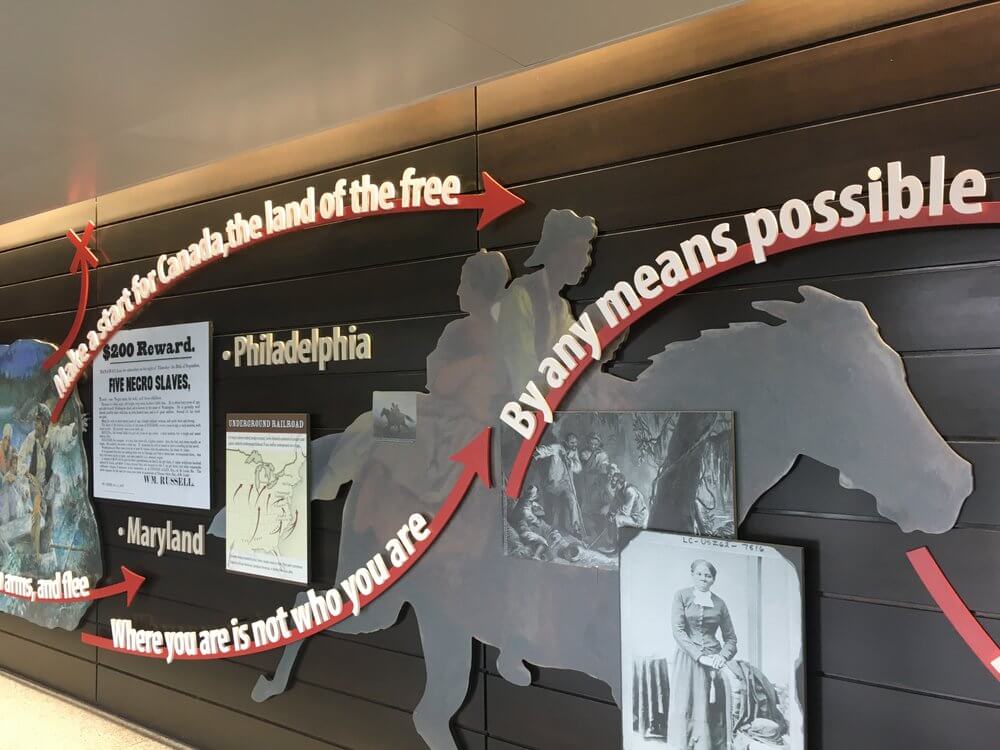Most people don’t realize that Buffalo & Niagara Falls played a huge role in the Underground Railroad and the emancipation of slaves.
The region’s geography and shared border with Canada made the Niagara Frontier a key destination for enslaved people seeking freedom in the 1800s. Crossing the Niagara River was the ultimate goal, since they were granted freedom once they reached Canada.
With February being Black History Month, we thought it would be interesting and timely to highlight the Buffalo-Niagara region’s involvement in the Underground Railroad and how those in the region helped enslaved African-Americans escape to freedom.
What was the Underground Railroad?
The Underground Railroad was a network of secret routes and safe houses in the United States during the early to mid-1800s. It was used by enslaved African-Americans to escape from the South to free states in the North, as well as Canada.
According to PBS, enslaved people in the South would first have to escape their slaveholder and then work their way north. Underground Railroad “conductors” then helped move them from one station to the next.

Escaped slaves would travel by train, rail and foot to reach the next “station,” a home or business that would provide them with shelter and food. Travel was often funded by donors who contributed to the movement, called “stockholders.” While the slaves sheltered, a message would be sent to the head of the next station, also called the “stationmaster,” who would await their arrival.
Buffalo-Niagara’s Importance in the Underground Railroad
According to WNYHeritage.com, due to a combination of geography, politics and sharing a border with Canada, reaching the Niagara Frontier was the goal of hundreds of African-American freedom seekers traveling along the Underground Railroad in the 1800s.
Slavery was legal in New York State until 1827, so getting to the state alone wasn’t enough to gain freedom until later in the century. Even after slavery in New York was outlawed, children of freed slaves remained in apprenticeship until they turned 21, and slave owners could, under some circumstances, bring slaves into the state, according to the website.
But across the Canadian-American border in what is now Ontario, Lieutenant-Governor John Graves Simcoe had passed an Anti-Slavery Act in 1793. Though the provision stated that people born into slavery would remain enslaved until their deaths, it forbade bringing new slaves into the province.
Therefore, all slaves who reached the province immediately became free, including those from America. As such, the Niagara River connecting Buffalo-Niagara to Canada provided a waterway to freedom for former slaves, both from New York and states further south. This set the stage for building the network that became known as the Underground Railroad.
Once slavery had been abolished in New York for some time, former slaves could help those in the South gain freedom by providing food and shelter along the Underground Railroad. In towns along the Great Lakes and Niagara River, many African-Americans, as well as white and native allies, offered food, shelter and assistance to hundreds of freedom seekers who crossed the border into Canada.
But they did so at their own peril, thanks to a law passed by Buffalonian and President Millard Fillmore. Trying to appease both the North and South and avoid a civil war, President Fillmore signed the Fugitive Slave Act of 1850, which made it a crime for any American to aid an escaped slave.

Suspension Bridge
According to WBFO, in November 1856 Tubman guided four escaped slaves via train over the Niagara Falls Suspension Bridge, which spanned the gorge near where today’s Rainbow Bridge stands. When they reached the Canadian side, she told freedom seekers that they had “shaken the lion’s paw,” a reference to Great Britain, which controlled the region until 1867, and thus were finally free.
According to WNYHeritage.org, what remains of the suspension bridge should be viewed as an important symbol of unity and cooperation between those in Western New York and Ontario who worked toward a common goal of helping enslaved people reach freedom:
“Such a well-documented monument to the struggle for freedom is something of which Western New Yorkers and Southern Ontarians should be proud. It is a monument to interracial and international cooperation in extending the bounds of liberty and opportunity, and deserves greater care and attention for what it is.”
Cataract House
Another crucial local Underground Railroad landmark was the Cataract House, one of the largest hotels in Niagara Falls in the 1800s. According to the Niagara Falls Underground Railroad Heritage Center, the Cataract House employed an entirely African-American wait staff, who helped many former slaves escape to freedom in Canada, some ferrying slaves across the Niagara River themselves. In 1850, more than 60% of African-Americans working at the Cataract House listed their birthplaces as a southern state or unknown/unlisted, which suggests that many of these people had escaped from slavery.

“The importance of the Cataract House as the center of Underground Railroad activism in Niagara Falls cannot be overestimated. The African American waiters who worked as Underground Railroad agents made this site one of the most important Underground Railroad nodes in the entire nation.”
While the suspension bridge and the Cataract House were considered essential spots for helping move freedom seekers to Canada, escaped slaves also traveled to Canada on boats from Lewiston and Youngstown, and some even swam across the Niagara River to freedom.
Local Museums Highlight Underground Railroad History
The Niagara Arts and Cultural Center (NACC), located in Niagara Falls, NY, features an Underground Railroad Exhibit called “Freedom Crossing: The Underground Railroad in Greater Niagara.” People can visit the exhibit to learn about the story of the Underground Railroad Movement in Buffalo Niagara and the people who risked their lives for freedom.
Also located in Niagara Falls, NY, the Niagara Falls Underground Railroad Heritage Center is an important place to visit to learn more about the region’s involvement in the Underground Railroad.

Buffalo-Niagara’s role in the Underground Railroad cannot be understated, yet even few locals realize just how important the region was in helping usher slaves to freedom. The region, and the brave people who risked their own safety to help others, should be recognized for their contributions to American history as a whole.

 Fair Housing Notice
Fair Housing Notice 